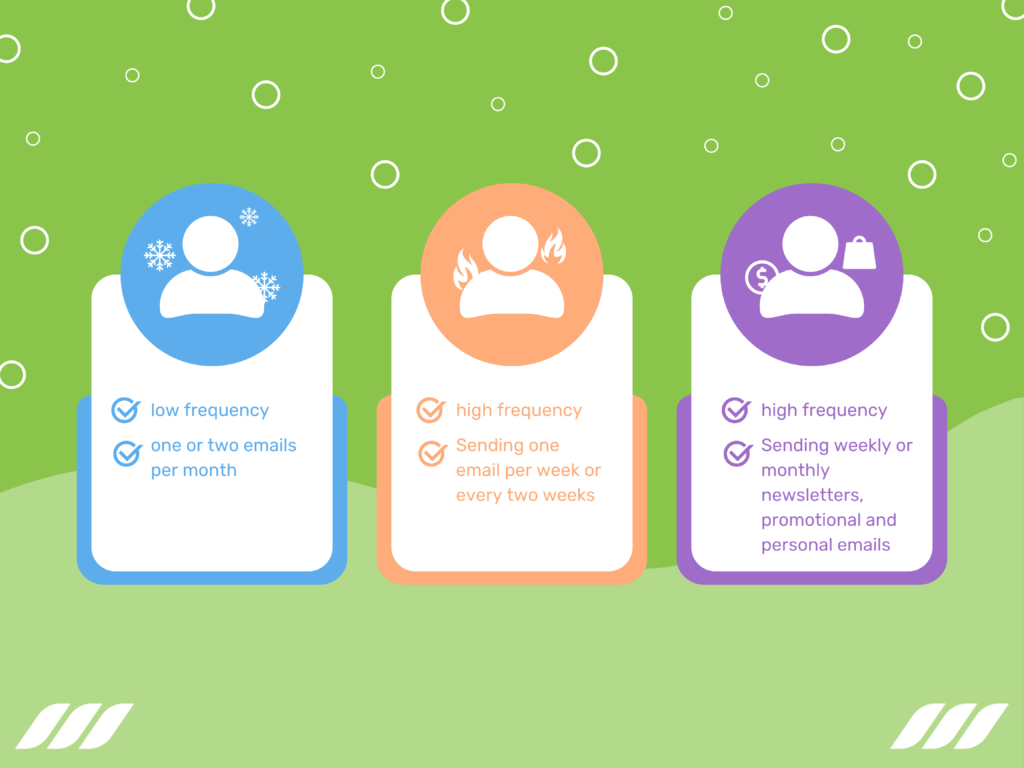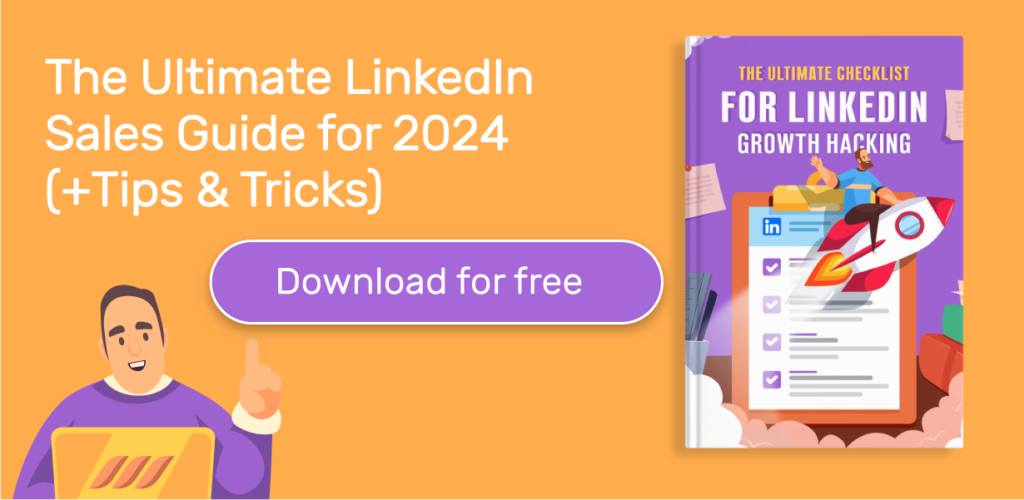|
Getting your Trinity Audio player ready...
|
Email marketing is an excellent way to reach out to leads and customers and build relationships. However, the success rate can be quite low when it comes to cold emails.
A cold email is an email sent to someone who has not expressed interest in your product or service. Since your outreach is unsolicited, it is important to understand the best time to send cold emails to improve your open rate and expect an email reply.
Read also: Best Email Marketing Automation Tools
This article will discuss everything you want to know about cold emails, from what is cold email to the best day and time to send cold emails and everything in between.
What Is a Cold Email?
A cold email is a message sent to a lead or potential customer who has not shown interest in your offering. It is a way to reach out to potential customers and introduce them to your brand.
Cold emails can be used to generate leads, promote a product or service, or simply build relationships. These types of emails are typically sent to a list of contacts who have not opted-in to receive them. As such, the open and response rates are generally lower compared to warm or hot leads.
What Can Affect Email Open Rates?
Email open rates are crucial for businesses that use email marketing to reach out to leads or potential customers. The open rate indicates the percentage of people who opened your email out of the total number of recipients.
The higher the open rate, the more effective the campaign. However, several factors can affect the open rate of an email. Understanding these factors can help businesses improve the open rate of emails and increase the chances of getting a reply.

Subject Line
Your email’s subject line is the first element the recipient sees after receiving your message.
A subject line that is too long or too short, or one that is not relevant to the recipient, can lead to the email being deleted or marked as spam. On the other hand, a good subject line should be short, clear, and relevant to the recipient. Good subject lines help improve the open rate of email campaigns.


Sender’s Name and Email Address
The sender’s name and email address also play a role in determining whether or not an email is opened. People are likely to open an email from someone they recognize or trust. In contrast, the email will likely be deleted or marked as spam if the sender’s name and email address are unfamiliar.
Content
The content of the email plays a role in determining the open rate. In fact, when your content is good enough, you can expect an email reply fairly quickly. It’s important to ensure the content is relevant, well-written, and provides value to the recipient.
Inbox Clutter
A cluttered inbox can make it difficult for your email to stand out. With so many emails to sift through, recipients may overlook or miss your email altogether. To combat this, businesses can use tools like subject line personalization and segmentation to increase the chances of their emails being opened.
Timing
If the email is sent at an inconvenient time for the recipient, they may not have time to open it or may overlook it. Therefore, it’s important to test different times of the day and days of the week to see when your emails have the highest open rate.
By understanding these factors and making adjustments, businesses can improve their email open rates and increase the chances of getting a reply.
Does Timing Matter for Email Marketing?


When it comes to timing, many businesses are left wondering if it really matters.
Does timing play a role in the success of an email marketing campaign?
The short answer is yes; timing does matter for engagement and business growth. The time you send emails can affect an email campaign’s open and response rates, so you definitely need to know the best time and day to send cold B2B email.
Timing also affects the conversion rates of email marketing, as it’s also important to send emails at the right moment in the customer journey. For example, it is a good idea to send a welcome email right after a customer registers with you or subscribes to your service.
Further, sending a cart abandonment email within an hour after a customer leaves an online shopping cart is a good strategy. Or maybe you’ll want to send a post-purchase email within 24 hours after a customer completes a purchase.
Another important aspect of timing is to consider the recipient’s time zone. If the recipient is in a different time zone, it’s important to send the email at a time that is convenient for them. Otherwise, you might be sending the email when the recipient is asleep or unavailable to check their email.
It’s good to test different times to determine which works best for your specific audience. You can use tools like A/B testing to see which emails have the highest open rate.
Read also: Cold Emailing Myths


The Best Day to Send Cold Emails
When to send cold emails? The best day of the week to send emails is on a Wednesday, Tuesday, or Thursday. These days are the most productive for most people, and they are less likely to be overwhelmed with other emails. Additionally, people are more likely to be back to work after the weekend and have more time to check and respond to emails.
The Best Time to Send Cold Emails
So, what is the best time to send an email to cold prospects?
Well, the best time to send emails is during the workweek, specifically between 9 AM and 2 PM. These times are when people are most active and engaged with their work.
In addition, people are more likely to check their email during breaks and lunchtime, increasing the chances of your email being opened.
How Many Cold Emails to Send Per Day
The number of cold emails to send per day depends on various factors such as your target audience, industry norms, and your capacity to personalize each email effectively. However, as a general guideline, it’s advisable to start with a manageable number, such as 20-30 emails per day, and gradually increase as you refine your approach and see results.
Remember, quality is often more important than quantity when it comes to cold email outreach, so focus on crafting personalized, relevant messages that resonate with your recipients.
Things to Consider in Choosing a Time to Send Emails
So, you’ve finally decided to send an email to cold prospects. That’s great, but when choosing the best time to send a prospecting email, there are a few key things to consider:
- Recipient’s schedule: understanding the recipient’s schedule and when they are most likely to check their email can help increase the chances of your email being opened.
- Recipient’s time zone: if the recipient is in a different time zone, it’s important to send the email at a time that is convenient for them.
- Day of the week: research suggests that the best day of the week to send emails is on a Tuesday or Wednesday.
- Time of day: the best time to send emails is during the workweek, specifically around 10 AM or 2 PM.
- Customer journey: it’s also important to send emails at the right moment in the customer journey, for example, sending a welcome email immediately after a customer signs up.
- A/B testing: testing different times to see which one works best for your specific audience.
Plus, always be mindful of holidays, weekends and special events that might affect your recipient’s schedule. And make sure that the content is relevant, well-written, and provides value to the recipient.
Read also: How to Clean Up Your Email List




When to Avoid Sending Cold Emails
- Holidays: People tend to be busy during holidays and may not have time to check their email.
- Weekends: People are usually more relaxed and have other activities planned, so the chances of them opening and responding to cold emails are lower.
- Special events: if you know your recipient will be away for a special event, such as a wedding, it would be best to avoid sending an email during that period.
- Late nights and early mornings: People are less likely to check their emails during these times, so the chances of your email being opened and responded to are lower.
It is also not a good idea to send cold emails when you are experiencing high unsubscribes or spam complaints. Plus, don’t send emails if you don’t have enough information about the recipient.
How Often Should You Email Your Prospect List
The frequency of sending emails to your prospect list depends on the type of relationship you have with your prospects and the goals of your email campaign. However, some general guidelines can help you determine the best frequency for your emails.
- For cold prospects: For cold prospects who have not previously expressed interest in your product or service, it’s best to start with a low frequency.
For instance, you may want to send an email to cold prospects once a month. In fact, sending one or two emails per month is a good starting point. This allows you to build relationships with your prospects without overwhelming them with too many emails.
- For warm prospects: A higher frequency may be appropriate for warm prospects who have shown some interest in your product or service.
Sending one email per week or every two weeks can help keep your brand top of mind and increase the chances of converting them into customers.
- For customers: The frequency of emails can be higher for existing customers. Sending weekly or monthly newsletters, promotional emails, or personalized messages can help increase customer engagement and loyalty.
Related article: Best Email Drip Campaign Examples
Measuring the Success of Your Cold Email Outreach
Measuring the success of your cold email outreach is crucial for understanding the effectiveness of your email marketing strategy and making improvements where necessary.
By monitoring key metrics, you can determine which elements of your emails are working well and which ones need to be tweaked. Some of the key metrics to track include:
- Open rate;
- Click-through rate;
- Bounce rate;
- Conversion rate;
- Unsubscribe rate.




Conclusion
The best time to send cold emails can vary depending on the specific industry, location, and audience. However, we recommend sending emails during the workweek and avoiding weekends and holidays.
Additionally, paying attention to the recipient’s time zone and schedule is important to ensure that the email is received at the right time. A/B testing at different times and days can also help determine the optimal send time for your specific situation and improve the open rate of emails.
Ultimately, the key is ensuring the email is received when the recipient is most likely to check their inbox and have time to engage with the content.
Read also: Best Time to Post on LinkedIn

![How to Write a Price Increase Letter [Tips, Examples, and Free Template]](https://dripify.io/wp-content/uploads/2021/12/27.png)
![How to Write an Effective Collaboration Email [+Templates]](https://dripify.io/wp-content/uploads/2023/05/13.png)



